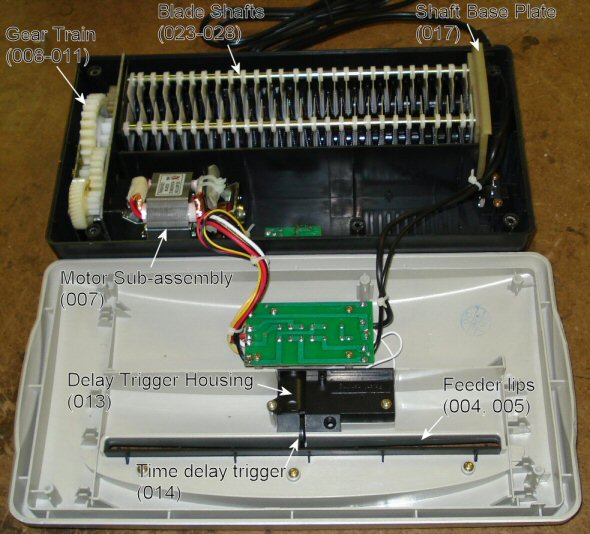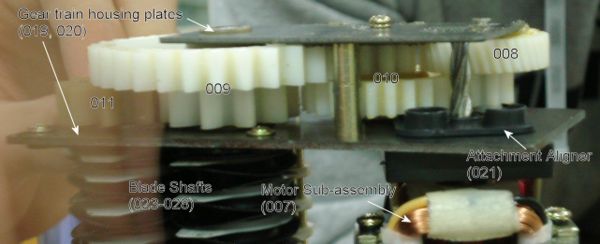Oscillating fan
From DDL Wiki
Contents |
Customer Needs
The customer’s primary need is to cool a room by circulating air. More air circulation provides greater air movement and cooling potential. The fan’s noise level is a concern of the customer. Quiet operation, with little to no vibrations is preferred. The customer must also be able to adjust the fan’s rotational speed to best suit the surroundings. This allows for quieter, lower energy, operation when maximum air circulation is unnecessary. Another necessity is the ability to vary the direction of where air is being. This includes altering the vertical orientation as well as providing horizontal oscillation. The fan should also be safe for the user. This involves shielding the fan blades, while still allowing air to pass through. This shielding prevents objects and body parts from coming in contact with the blades. Fans are generally only used during warm times of the year. As a result they must be easy to move and store while not in use.
Function
An oscillating fan cools an area using forced convection thus increasing heat transfer. This is accomplished by spinning three plastic blades which circulates air in the desired direction. The blades are spun by an AC brushless motor, which is powered from a standard 120V wall outlet. The motor’s rotational speed can be adjusted by the user using a circular knob. The fan is also capable of horizontal oscillation. The user starts this movement by pushing a button at the top of the fan casing. This engages a gear train which spins a small plastic linkage. This linkage is connected to an aluminum bar which is attached to the casing. This simple mechanism translates circular motion to oscillatory horizontal motion. The gear train is powered by the same motor and shaft that spin the blades, thus requiring no additional motor.
FMEA
Components:
As part of the first stage of disassembly, we documented the inner workings prior to removing each individual component. The first image shows the shredder with the top removed and certain key components labeled. The second is a detailed close-up of the gear train. Refer to the table below for more details on individual components identified in these pictures.
The following table contains each individual part present in the product. A brief description of each part and its function will help determine whether any of the components can be refined for future designs to make it less expensive or possibly remove it all together. It can be also be seen that a large, important part of the system is purchased (the motor and electronics).
| Part # | Part name | QTY | Function | Materials | Manufacturing Process | Picture | |
|---|---|---|---|---|---|---|---|
| 001 | Front Fan Cover | 1 |
| ?? | Merging of Extruded Parts | Image:Fan Front Cover.jpg | |
| 002 | Switch Housing | 1 |
| Plastic | 3" x 1" x 1" | Injection Molding | 
|
| 003 | Base | 1 |
| Plastic | 12" x 5" x 3" | Injection Molding | 
|
| 004 | Feeder Lip Top | 1 |
| Plastic | 8" x 2" x 1" | Injection Molding | 
|
| 005 | Feeder Lip Bottom | 1 |
| Plastic | 8" x 2" x 1" | Injection Molding | 
|
| 006 | Child Safety | 1 |
| Plastic | 2" x 1" x 1" | Injection Molding | 
|
| 007 | Electrical & Motor Sub-assembly | 1 |
| N/A | N/A | Purchased | 
|
| 008 | Helical Gear | 1 |
| Plastic | 1" x 1" | Injection Molding | 
|
| 009 | Large Spur Gear | 1 |
| Plastic | 3" x 1" | Injection Molding | 
|
| 010 | Small Spur Gear | 1 |
| Plastic | 1" x 1" | Injection Molding | 
|
| 011 | Output Spur Gear | 1 |
| Plastic | 1" x 1" | Injection Molding | 
|
| 012 | Light Bulb Reflector | 1 |
| Plastic+Aluminum | .5" x .5" x 1" | Injection Molding and Sheet Foil | 
|
| 013 | Delay Trigger Housing | 1 |
| Plastic | 3" x 1" x 1" | Injection Molding | 
|
| 014 | Cutoff Switch Time-Delay Trigger | 1 |
| Plastic | 1" x 1" x .5" | Injection Molding | 
|
| 015 | Spring for Child Safety Switch | 1 |
| Spring Steel | 1/8" x .5" | Winding | 
|
| 016 | Bow-Tie Washer | 1 |
| Plastic | 1" x 1" x 1/8" | Injection Molding | 
|
| 017 | Main Shaft Base Plate | 1 |
| Plastic | 3" x 3" x 1/4" | Injection Molding | 
|
| 018 | Cover Plate for Shaft Alignment | 1 |
| Plastic | 2" x 2" x 1/4" | Injection Molding | 
|
| 019 | Gear Train Housing Base Plate | 1 |
| Metal | 4" x 2" x 1/4" | Stamped | 
|
| 020 | Gear Train Housing Top Plate | 1 |
| Metal | 3" x 1" x 1/4" | Stamped | 
|
| 021 | Attachment Aligner for Motor Base Plate | 1 |
| Plastic | 1" x 1" x 1/4" | Injection Molding | 
|
| 022 | Screws | 31 |
| Steel | #10-20 | Machined |  In the background In the background
|
| 023 | Helical Blade | 104 |
| Steel | .5" x 1\32" | Stamped | 
|
| 024 | Flat Blade | 8 |
| Steel | .5" x 1\32" | Stamped | 
|
| 025 | Paper Aligners | 54 |
| Plastic | 1/2" x 1/4" x 1" | Injection Molding | 
|
| 026 | "Paper Aligner" Aligning Rod | 2 |
| Metal | 1\4" x 8" | Extrusion |  Gold rod Gold rod
|
| 027 | Long Main Shaft | 1 |
| Steel | 10" x 1/4" | Machined |  Center rod Center rod
|
| 028 | Short Main Shaft | 1 |
| Steel | 9" x 1/4" | Machined |  Center rod Center rod
|
| 029 | Basket | 1 |
| Steel | 12" x 12" x 5" | Stamp | 
|
| 030 | Tab | 1 |
| Steel | 1/2" x 1/2" x 1/2" | Stamped |  On the basket On the basket
|


